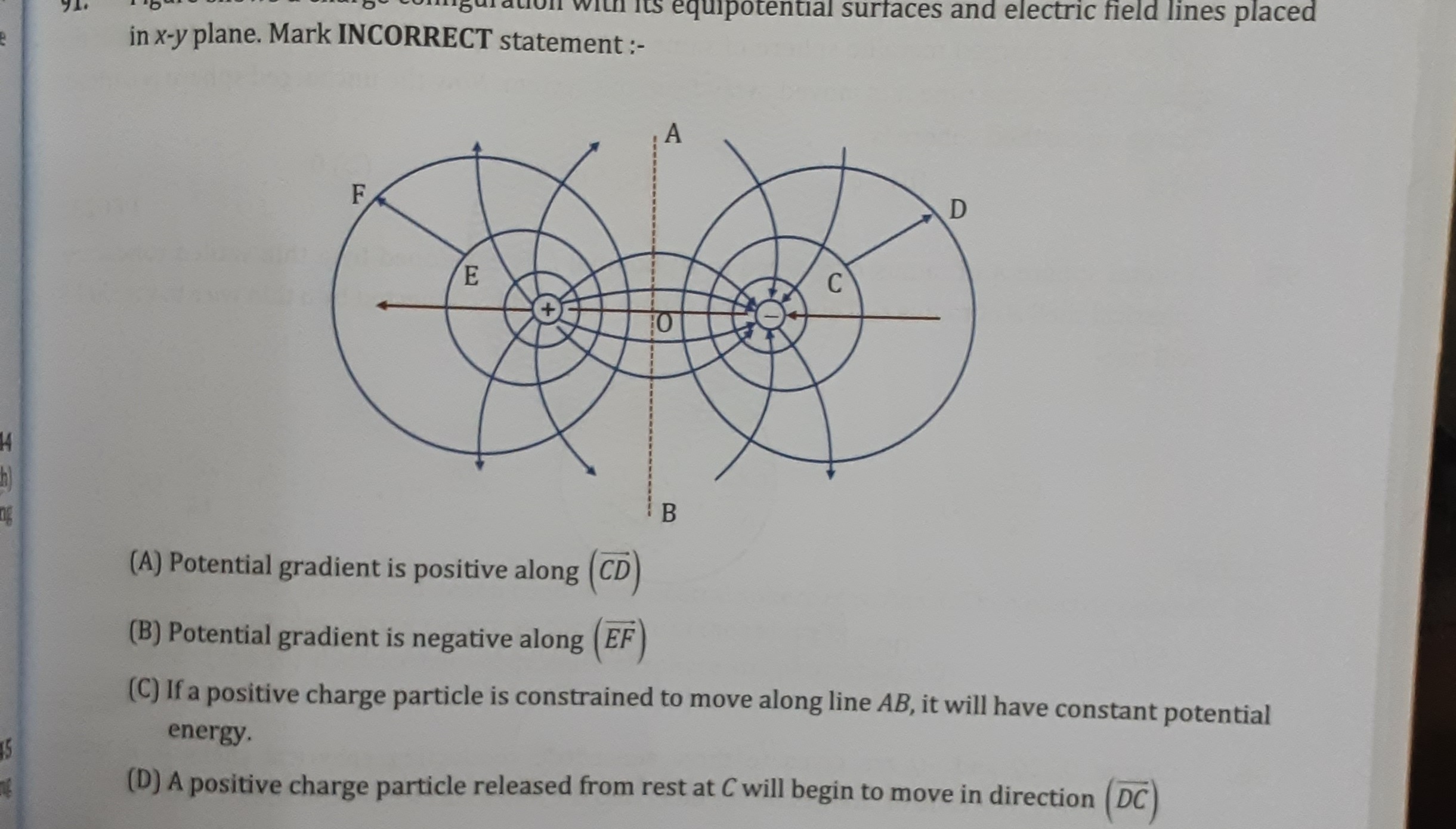Question
Question: Figure shows a charge configuration with its equipotential surfaces and electric field lines placed ...
Figure shows a charge configuration with its equipotential surfaces and electric field lines placed in x-y plane. Mark INCORRECT statement :-

Potential gradient is positive along (CD)
Potential gradient is negative along (EF)
If a positive charge particle is constrained to move along line AB, it will have constant potential energy.
A positive charge particle released from rest at C will begin to move in direction (DC)
(A)
Solution
The question asks to identify the incorrect statement. Let's analyze each statement:
Statement (A): "Potential gradient is positive along (CD)" The direction CD is along the electric field lines, which are shown pointing from C to D. Electric field lines always point from regions of higher potential to regions of lower potential. Therefore, as we move from C to D, the potential decreases. The potential gradient is the rate of change of potential with distance. Since the potential is decreasing along CD, the potential gradient along CD is negative. Thus, statement (A) is incorrect.
Statement (B): "Potential gradient is negative along (EF)" The direction EF is along the electric field lines, which are shown pointing from E to F. As we move from E to F, the potential decreases. Therefore, the potential gradient along EF is negative. Thus, statement (B) is correct.
Statement (C): "If a positive charge particle is constrained to move along line AB, it will have constant potential energy." For a charge particle to have constant potential energy, it must move along an equipotential line. The line AB is shown as a dashed vertical line that is intersected by electric field lines. Electric field lines are always perpendicular to equipotential surfaces. Since the electric field lines cross the line AB, AB is not an equipotential line. Therefore, the potential energy of a charge particle moving along AB will change. Thus, statement (C) is incorrect.
Statement (D): "A positive charge particle released from rest at C will begin to move in direction (DC)" At point C, the electric field is directed towards the negative charge. The direction DC is from D to C. From the figure, D is to the left of C, and C is to the left of the negative charge. Thus, the direction from D to C is to the right, which is in the direction of the electric field at C. Since the electric field at C is to the right, a positive charge will move to the right, which is in the direction DC. Thus, statement (D) is correct.
Both statements (A) and (C) are incorrect. However, in a typical single-choice question, only one option is expected to be incorrect. Re-examining the figure and options, statement (A) is a direct contradiction with the direction of electric field lines and the definition of potential gradient. Statement (C) is also incorrect as AB is not an equipotential line. If we must choose only one incorrect statement, and considering the typical emphasis in physics problems, statement (A) is the most direct and unambiguous incorrect statement based on the provided diagram. The potential gradient is defined as −drdV. Since the electric field points from higher to lower potential, and the electric field is along CD, the potential decreases along CD, making the potential gradient negative. Statement (A) claims it is positive, which is false.
